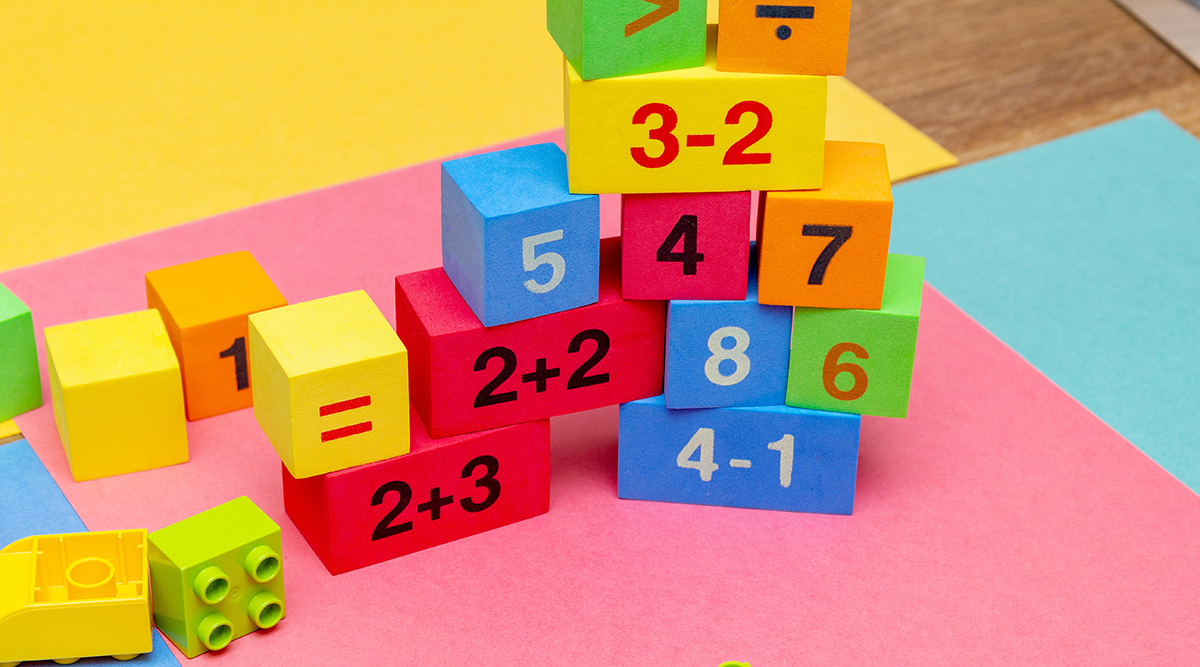Understanding Shapes in Math
Shapes in maths play an important role in the subject, therefore serving as the basis for a many other concepts and applications. From simple 2D figures and regular polygons to complex 3D structures, shapes provide a visual representation of math ideas and enable us to analyse and understand the world around us. In this article, we will dive into the world of shapes, exploring their characteristics, number of sides, categories, and geometric shapes. By the end, you’ll have a deeper understanding about math shapes.

Understanding 2D Shapes
For primary student math, usually shapes exist as flat, closed figures. Referred to as 2D shapes and recognised by their length and width. 2D shapes exist within a flat plane and are described by their length and width.
As can be seen, they require two coordinates to specify any point within them. Some commonly encountered 2D shapes include squares, rectangles, circles, and triangles.
Square
A square is a special one of the basic shapes in maths with four equal sides and four identical interior angles. This trait gives the square its symmetry, regularity and solid shape presence. All four angles in a square are right angles, measuring 90 degrees each.
Area & Perimeter: The area of a square is calculated by squaring the length of one side, while the perimeter is determined by multiplying the side length by 4.
Rectangle
A rectangle is even so another important 4 sided figure with distinct properties that differ it from a square. In a rectangle, opposite sides are equal in length, while adjacent sides may have different lengths. This property distinguishes rectangles from squares. Equally important, it is also similar to squares as it has four right angles measuring 90 degrees each.
Area & Perimeter: The area of a rectangle is calculated by multiplying the length and width, while the perimeter is determined by adding the lengths of all four sides.
Circle
In the first place, circles have no straight sides or angles and are curved. A single radius that measures the distance from the center to any point on the circle’s boundary. On the other hand, diameter measures the distance between every edge of the circle line segment. All things considered, you can just multiply the radius by two to get the diameter.
Circumference: The circumference of a circle is the distance around its boundary. You can calculate it with formula C = 2πr, where “C” represents the circumference and “r” denotes the radius. The value of π (pi) is approximately 3.14.
Area: The area of a circle is the measure of the region enclosed by its boundary. It can be calculated using the formula A = πr^2, where “A” represents the area and “r” denotes the radius.
Triangle
Triangles are three-sided polygons, and they come in various types such as equilateral, isosceles, and scalene, depending on the length of their sides and the measure of their angles.
Based on the length of their sides:
- Equilateral: Triangle where all three sides are of equal length
- Isosceles: Triangle where only two sides are of equal length
- Scalene: Triangle where all three sides have different lengths
The measure of their angles:
- Acute: Each of the angles in the triangle are less than 90 degrees
- Obtuse: One of the angles in the triangle is greater than 90 degrees
- Right: One of the angles in the triangle is 90 degrees
Area & Perimeter: If you have the length of the base and the height of the triangle, you can use the formula A = (1/2) × base × height. Add the lengths of all three sides to find the perimeter. If the lengths of the sides are a, b, and c, then the perimeter is P = a + b + c.

Understanding 3D Shapes
Moving beyond the confines of two dimensions, we move on to 3D shapes. The figures have more depth in addition to length and width, making them more complex and realistic.
3D shapes have 3 elements instead of 2, which are length, width, and depth. You need three coordinates to pinpoint a location within them. Some prominent examples of 3D shapes include cubes, spheres, pyramids, and cylinders.
Cubes
Cubes are three-dimensional figures with six equal square faces, each meeting at right angles. They have equal lengths, widths, and heights.
Volume: The volume of a cube is determined by the formula V = s^3, where “V” represents the volume and “s” represents the length of one side.
Surface Area: The surface area of a cube is calculated using the formula SA = 6s^2, where “SA” represents the surface area and “s” represents the length of one side.
Spheres
Spheres are perfectly symmetrical three-dimensional shapes, resembling a ball. They have a constant radius and every point on their surface is equidistant from the center.
Volume: The volume of a sphere is calculated using the formula V = (4/3)πr^3, where “V” represents the volume and “r” represents the radius.
Surface Area: The surface area of a sphere is given by the formula SA = 4πr^2, where “SA” represents the surface area and “r” represents the radius.
Pyramid
Pyramids have a polygonal base and triangular faces that converge to a single point called the apex. The type of pyramid is determined by the shape of its base, such as a square pyramid or a triangular pyramid.
Volume: The volume of a pyramid can be calculated using the formula V = (1/3) × base area × height, where “V” represents the volume.
Surface Area: The surface area of a pyramid can be calculated by summing the areas of its individual faces.
Cylinder
Cylinders consist of two parallel circular bases connected by a curved surface, they can be displayed as a can or a tube.
Volume: Multiplying the area of the base (πr^2) by the height gives the volume of the cylinder.
Surface Area: The surface area of a cylinder is calculated using the formula SA = 2πrh + 2πr^2
Shapes form the foundation of math concepts, allowing us to analyse and understand the world around us. Whether in two dimensions or three, shapes possess unique properties and traits that make them different from one another. From simple squares and circles to complex 3D structures like spheres and pyramids, shapes play a crucial role in numerous applications, not just in mathematics but also in real life.
If you want your child to learn more insights around math beyond math shapes, you can have them revise using Practicle’s math learning game!
We offer tailored math questions through fun gaming features, such as daily quests and prized challenges!
In conclusion, you can consider trying out our math playground experience the learning while having fun!
